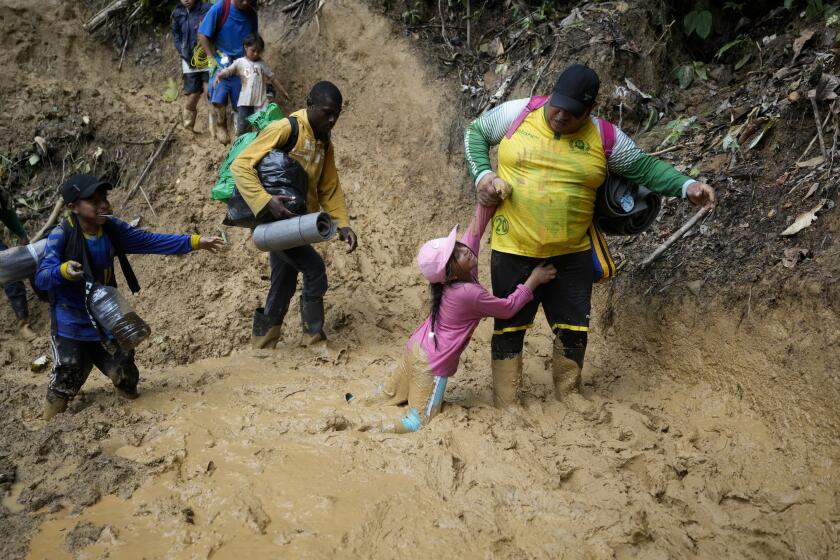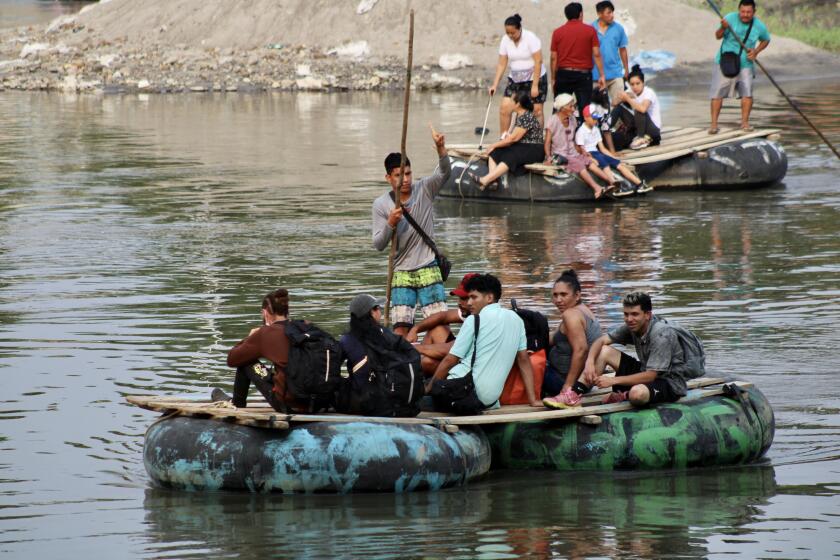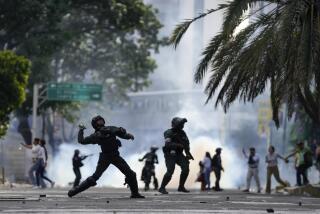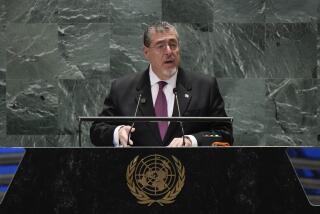Panama launches U.S.-backed operation to stop flow of migrants
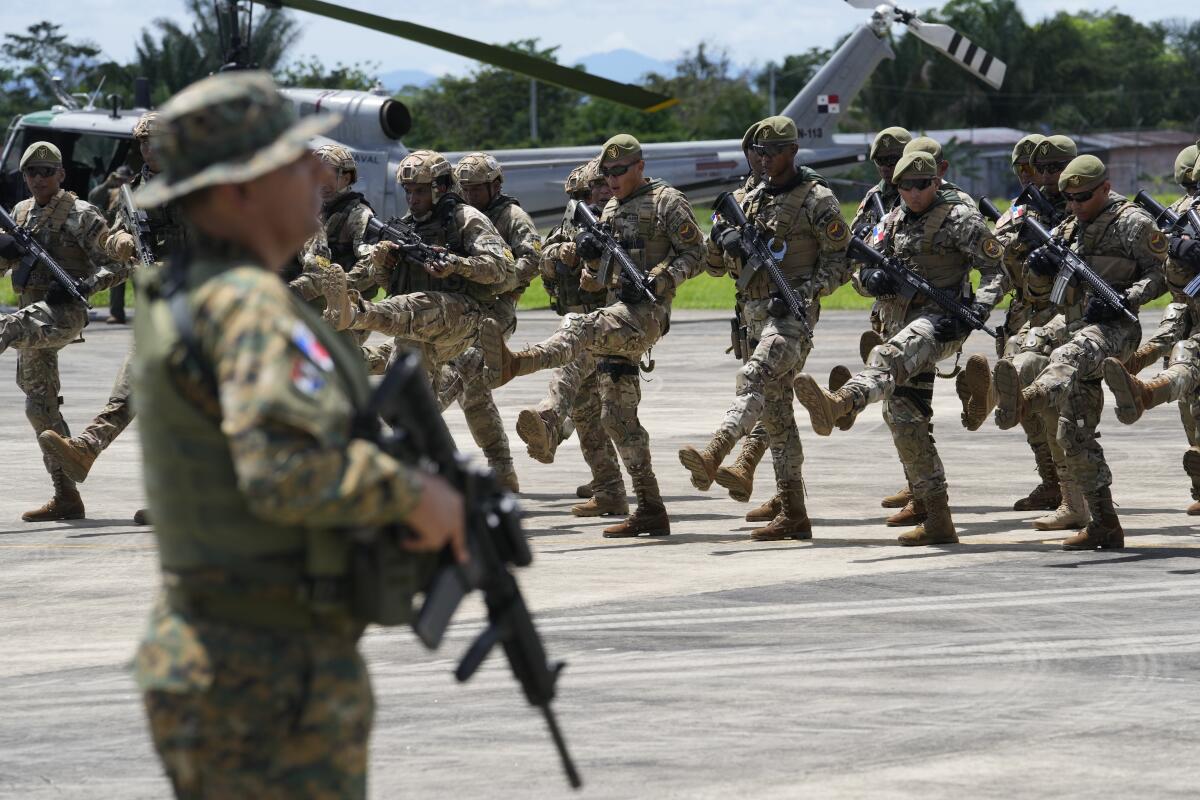
NICANOR, Panama — Panama launched a security operation along its shared border with Colombia on Friday to combat criminal gangs and migrant smugglers involved in record-setting migration through the perilous Darien Gap this year.
Security officials said Operation Shield is part of the agreement reached with the governments of Colombia and the United States in April to stop the flow of migrants through the border’s jungle-clad mountains.
At a naval air base in Panama’s far east Darien province, rifle-toting border police outfitted in camouflage were conducting drills Friday on the tarmac in front of helicopters previously donated by the U.S. government.
Panama will dedicate some 1,200 immigration agents, border police and members of the naval air service to what it said will be an air, land and sea effort. The targets will not be the hundreds of migrants traversing the dense jungle each day, but the organized criminal groups that prey on and profit from them on both sides of the border.
“This is an action by the Panamanian government against criminals who are earning fortunes from human pain,” Security Minister Juan Manuel Pino said. The campaign was the first visible example of the efforts promised by the three governments.
He said the U.S. is in the process of replacing six of Panama’s helicopters with eight new ones.
Panama’s government estimates that 50,000 migrants crossed the treacherous Darien Gap from Colombia in the first two months of the year.
In recent years, the roadless Darien Gap between Colombia and Panama has become a major and increasingly well-established migration route for extra-continental migrants seeking to reach the United States. Its location on the narrow isthmus makes it a natural point to try to gain control of migration flows, but its remoteness and lawlessness have long made that a challenge.
On Sunday, Panamanian border police encountered nine people suspected of robbing migrants and police killed three of them in a shootout.
Oriel Ortega, director of the border police, said Friday that the dominant criminal group operating in the Darien was Colombia’s Gulf Clan. The gang terrorized much of northern Colombia to gain control of major cocaine smuggling routes through thick jungles north to Central America and into the U.S. It also moves weapons and migrants.
Smaller gangs work along the Colombia-Panama border as well.
The number of migrants encountered at the U.S. southern border has fallen significantly since coronavirus-related restrictions on requesting asylum at the border were lifted and replaced with expanded legal pathways and more punitive measures for those who try to enter illegally.
Pino, Panama’s security minister, said that gaining control of its border with Colombia was no longer just an immigration problem, but a question of national security.
“It is easier now to traffic a person than to traffic a kilo of drugs,” Pino said.
Following the expiration of Title 42, U.S.-bound migrants are still arriving at Mexico’s southern border to travel north, in a chaotic scene.
Officials dismissed any suggestion of closing the border. It was the first visible example of the efforts promised by the three governments.
“Our country is not a migratory destination, nor does it produce emigration, but its geographic position makes it an obligatory route for this phenomenon,” Pino said.
He noted that since 2009, 663,000 people had crossed the Darien, most of them in just the last couple years.
In April, the United Nations warned that the unprecedented number of crossings to start the year suggested that some 400,000 migrants could cross this year. According to government data, nearly 170,000 migrants crossed the Darien in the first four months of the year, five times the number from the same period last year.
In conjunction with the additional manpower, Panama plans a publicity campaign to drive home the message that the Darien should not be an option for migrants.
Pino noted that about 60% of the people crossing Darien this year have been children.
Samira Gozaine, director of Panama’s immigration agency, said smugglers lure migrants to the route with false promises that it will take only two days to cross the steep mountains and rushing rivers rather than a week or more.
So far this year, Panamanian authorities have reported recovering at least 24 bodies believed to be migrants and have received reports of some 40 missing migrants.
More to Read
Sign up for Essential California
The most important California stories and recommendations in your inbox every morning.
You may occasionally receive promotional content from the Los Angeles Times.
